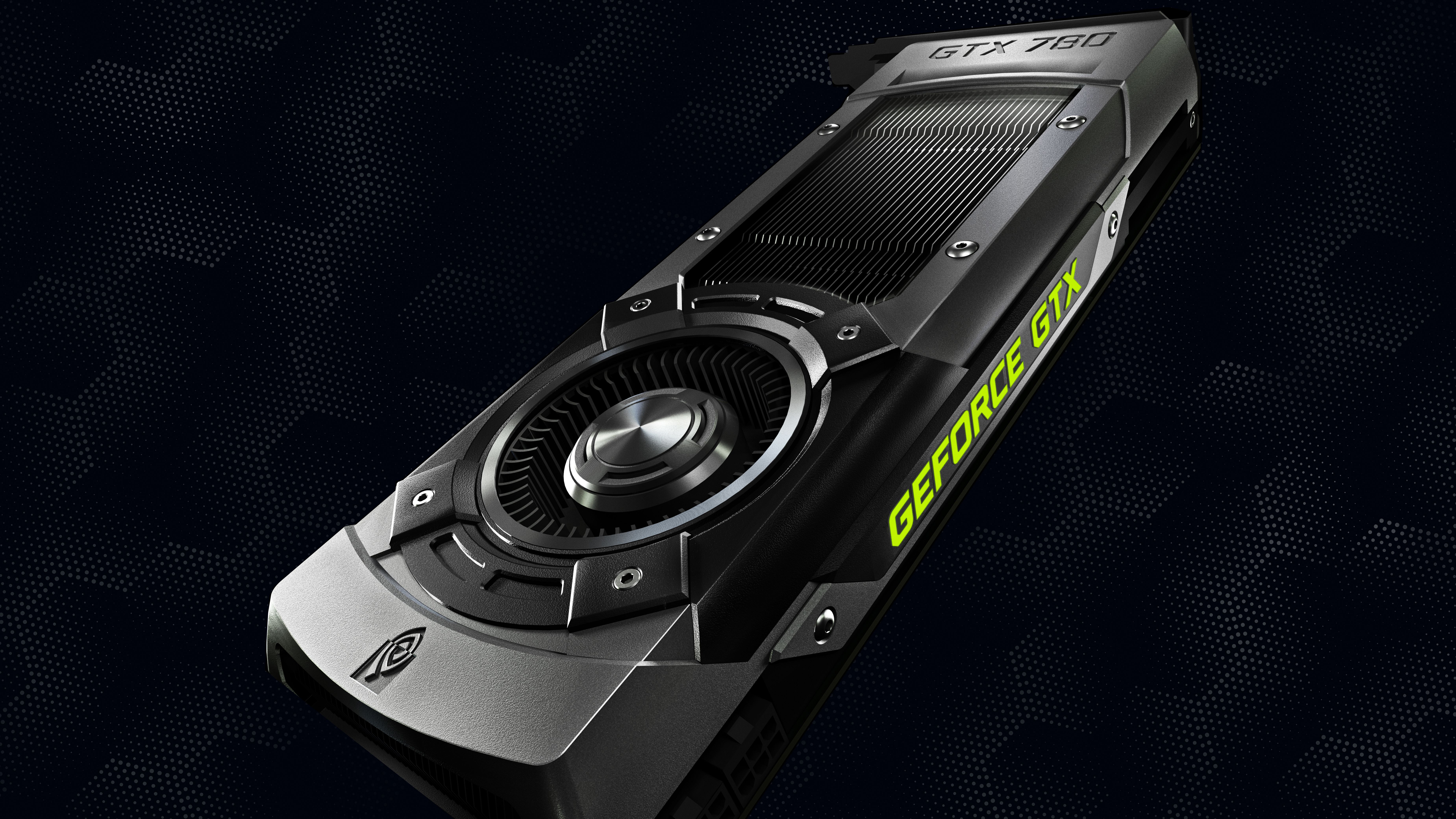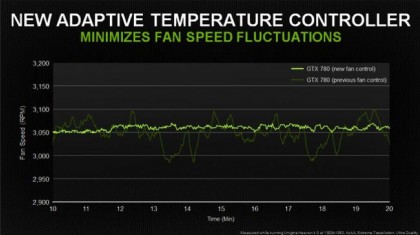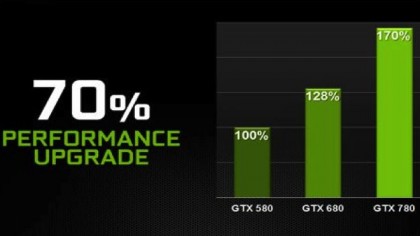With new GPU in tow, Nvidia draws line in PC gaming ground
AMD can't have all the fun

Hey gamers - still riding your high from the Xbox One announcement?
Nvidia has its own set of gaming goodness that might extend the buzz a little longer, announcing today, three PC gaming-oriented oratories.
First on the block: the GeForce GTX 780, a GPU based on the same GK110 GPU used in the GeForce GTX Titan. It's Kepler architecture and, according to Nvidia, whirs "whisper quiet."
At 2304 CUDA cores, the GeForce GTX 780 boasts 50 percent more cores than the GeForce GTX 680 and 50 percent more memory thanks to a 3GB frame buffer. What's more, the 780 has a 384-bit memory interface that provides 288.4GB/sec of peak memory bandwidth to the 780 for maximum screen resolution.
Stack it up to AMD's HD 7970 (on Nvidia's terms), and the GTX 780 runs titles like Batman: Arkham City and Shogun 2 39 percent faster, while Borderlands 2, Battlefield 3 and Far Cry 3 run 25 percent to 30 percent faster at 2560 x 1600. The processor is also designed to support next-gen tech Nvidia has in the works, such as WaveWorks and FaceWorks, and features Nvidia's GPU Boost. 2.0.
Game force
While the fan of the GTX 780 may be effective at cooling the machine down as any standard fan should, Nvidia wanted to ensure that the uptick hum that can often become, well, annoying, was diminished with a new fan controller.
Utilizing an RPM and temperature targeted control algorithm, the GTX 780's fan stays at as steady a speed as possible.
Get daily insight, inspiration and deals in your inbox
Sign up for breaking news, reviews, opinion, top tech deals, and more.

In other words, the fan doesn't over or under compensate, instead staying taking minor dips up and down to whatever speed necessary enough to cool the card.
Base clock for the GTX 780 is 863MHz, with a typical boost clock speed of 900MHz and memory reaching a 6008MHz data rate.
Priced at $649 (around UK£431, AU$673), the GTX 780 stretches 10.5-inches and comes with display outputs including two dual-link DVIs, one HDMI and one Display Port connector.
Last but worth noting, the 780 will replace the GTX 680 in Nvidia's offering line.

Time for GeForce
If you've been tooling around with GeForce Experience in beta form, you may be happy to know that it's finally buttoned up and ready to go.
GeForce, for those who don't know, is a Nvidia-developed software that aims to make PC gaming more accessible by automatically choosing the optimal settings for any given title. All a user needs to do is click the "optimize" button, and the software takes care of the rest.
Beta downloads since January have hit 2.5 million and now, beginning with the R320 GTX 780 launch driver, each GeForce graphics card will come with it standard.
GeForce Experience is the replacement for Nvidia Update and eventually it will come standard with every one of Nvidia's graphics drivers.
As the year goes on, Nvidia plans to add more game support and will roll out new features such as optimal playable settings customization, support for Shield and (drumroll please) the all-new ShadowPlay.
A nice recording feature, ShadowPlay will be available this summer as a capture function within the larger functions of GeForce Experience. It taps into the H.264 video encoder built into all Kepler GPUs and works in the background - it will constantly be recording, but with only a nominal impact on visuals, if any.
It's constantly going, but games can choose up to 20 minutes of content to record, while a hot button feature will let them get ShadowPlay running without being interruptive.
- The Xbox One is still fresh in our minds. Read on for what games you'll find on the new console.
Michelle was previously a news editor at TechRadar, leading consumer tech news and reviews. Michelle is now a Content Strategist at Facebook. A versatile, highly effective content writer and skilled editor with a keen eye for detail, Michelle is a collaborative problem solver and covered everything from smartwatches and microprocessors to VR and self-driving cars.
